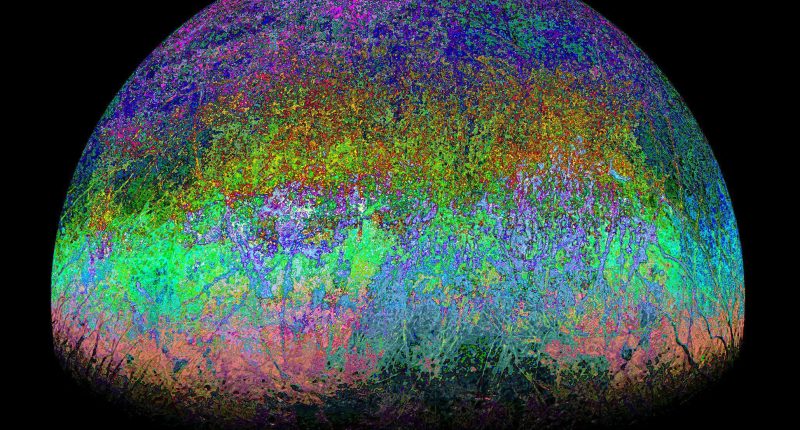NASA’S James Webb Space Telescope has discovered carbon dioxide in the atmosphere of Jupiter’s moon Europa.
Europa features a thick layer of ice, which scientists have long believed blankets a liquid water ocean.
The presence of liquid water makes Europa one of the most potentially habitable places in our solar system.
And now, in a new study, evidence suggests that this ocean contains carbon dioxide.
Also known as a biosignature, carbon is an organic molecule that is fundamental to the building blocks of life as we know it.
Other biosignatures consist of hydrogen, oxygen, and nitrogen, among others.
The new discovery was made by Nasa’s James Webb Space Telescope (JWST).
The instrument can identify chemicals like carbon because of the infrared wavelengths they emit.
Moreover, the carbon dioxide doesn’t appear to have come from a foreign body, such as a meteorite or asteroid.
“Previous observations from the Hubble Space Telescope show evidence for ocean-derived salt in Tara Regio,” Cornell University planetary scientist Samantha Trumbo said in a statement.
Most read in News Tech
“Now we’re seeing that carbon dioxide is heavily concentrated there as well.”
“We think this implies that the carbon probably has its ultimate origin in the internal ocean.”
Researchers identified signs of both crystalline and amorphous carbon dioxide on Europa.
However, because carbon dioxide is fairly elusive on Europa’s surface, the researchers believe that it came up from the ocean.
Scientists are planning to conduct further research on Europa, with Nasa expecting to launch its Clipper mission in 2024.
Meanwhile, the European Space Agency launched the Jupiter Icy Moons Explorer (JUICE) spacecraft in April.
The instrument is expected to arrive in Jupiter’s orbit around 2031.
In the meantime, JWST will continue to record more observations of the gas giant and its mystifying moons.










